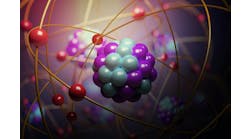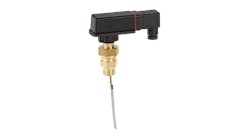Why measure flow? This question offers some insight into the nature of flow and the need for different types of flowmeters. But if we ask a similar question about time, the answer becomes clearer.
While it’s impossible to have a universe without time, it is possible to conceive of a world without time measurement. Such a world would be chaotic because people couldn’t easily make appointments, know how long they’ve worked, or decide when to go to bed. If you want to completely disrupt society, take clocks and watches away.
Time and flow are closely related ideas. Time is hard to define, but it’s closely related to duration. We might say that time is the continuous quality of duration. Today, we measure time with clocks, but time existed before clocks. The measurement of time began with the sundial in 1500 B.C.
Today, our lives are governed by many types of mechanical or electronic clocks. The fly in this ointment is that our bodies aren’t mechanical, they’re rhythmic, like a sine wave. We don’t always get hungry at 6 p.m. or sleepy at 10:30 p.m. It isn’t natural to have to wake up at 6 a.m. every morning to go to work. Our lives flow, along with our biological rhythms, and our mechanical and electronic clocks can seem more like a Procrustean bed, forcing us to fit into an unnatural pattern, than a convenient way to live our lives.
Similar to time, flow exists independent of its measurement. It’s a continuous phenomenon that’s hard to analyze. One definition of flow is “the uninterrupted motion of a fluid or a pattern of objects moving uniformly along a path in a direction.” On earth, flowing rivers and streams existed long before anyone appreciated or measured them.
We measure flow because we want to know how much fluid in mass or volume is going through a pipe, down a river or stream, or in an open channel. That fluid can be water, other liquids, gas, air or steam. Flowmeters also measure the flow of solids such as grains, nuts and cereals.
Flow measurement is an integral part of almost every aspect of our lives. When we fill our gas tank, a flowmeter measures how much fuel is dispensed. We want to be sure that we get the amount of fuel we require and paid for. Flowmeters measure how much ingredients go into our food, how much water we use in our homes, and how much oil or gas we use to heat and cool them. Just as our society would be thrown into chaos if all clocks and watches were taken away, a world without flowmeters is practically inconceivable.
Flowmeters have a practical value to industrial applications. Some manufacturers in our post-pandemic world responded to rising costs by shrinking the amount of product delivered, while maintaining or even raising prices. This is popularly known as “shrinkflation,” a term coined in 2009 by Pippa Malmgren, a British economist.
Shrinkflation can occur in almost any solid or fluid product. The main reason people object to shrinkflation is the element of deception. The “new and improved” but smaller product is made to look just like the original, only it contains less than before but at the same or higher price.
Shrinkflation is one example where precise measurement is important, but only part of a broader picture involving the need for accurate measurement. Flowmeters are part of this process. Other measurement methods include weighing with a scale or using level measurements. The measurement method chosen depends on the product, manufacturing process and available equipment. Precision and accuracy are important for making sure products are produced correctly and contain the right amount of ingredients. When flowmeters are involved, companies are likely to select the most accurate meter that’s consistent with allowable costs.
Education is our best defense against shrinkflation. Knowledge of the different types of flowmeters and how they work is the best background for selecting the right flowmeter that’s accurate, reliable and within budget.
Latest from Flow
Latest from Flow





